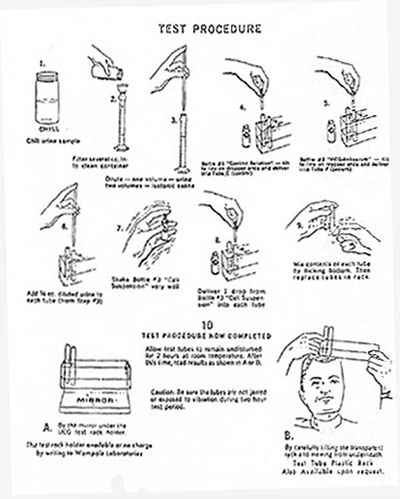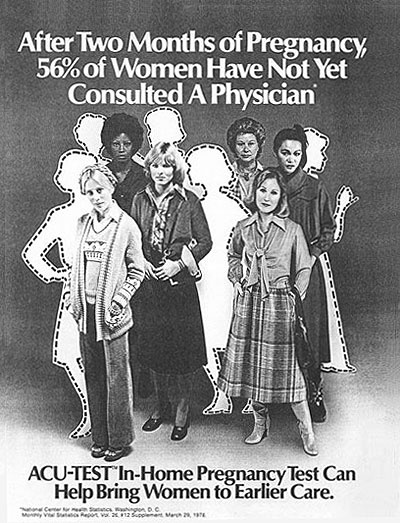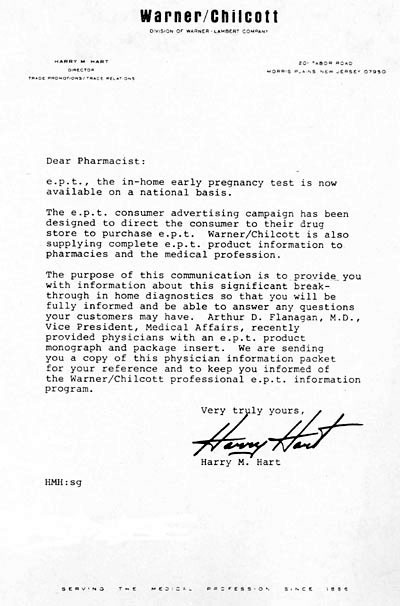...
Vaitukaitis, Braunstein, and Ross published their paper describing the hCG beta-subunit radioimmunoassay that could finally distinguish between hCG and LH, therefore making it potentially useful as an early test for pregnancy. See Vaitukaitis, J.L., Braunstein, G.D., and Ross, G.T. (1972) “A radioimmunoassay which specifically measures human chorionic gonadotropin in the presence of human luteinizing hormone.” American Journal of Obstetrics and Gynecology, 113, 751-8.
| Div | |||||
|---|---|---|---|---|---|
| |||||
|
...
| Div | ||||||||
|---|---|---|---|---|---|---|---|---|
| ||||||||
|
...
By the end of 1977, e.p.t was ready for the American market. (Because of requirements for the specific wording on packaging and other last-minute details, there is a lag time between FDA approval and wide availability of most medical devices.) In a “Dear Pharmacist” letter from Warner/Chilcott, drug stores were informed that “the e.p.t consumer advertising campaign has been designed to direct the consumer to their drug store to purchase e.p.t”
| Div | |||||
|---|---|---|---|---|---|
| |||||
|
...
| Div | ||||||||||
|---|---|---|---|---|---|---|---|---|---|---|
| ||||||||||
|
...




